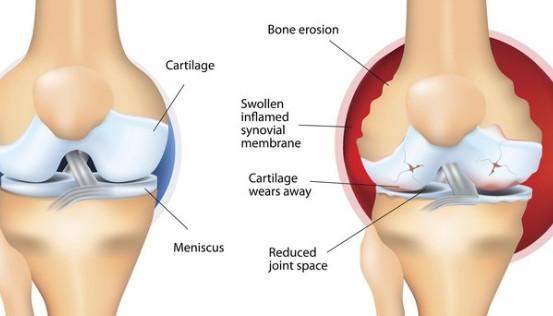Your body is held together by tissues that connect all of the structures in your body. When you have a connective tissue disease, these connecting structures are negatively affected. Connective tissue diseases include autoimmune diseases like rheumatoid arthritis, scleroderma and lupus.
A connective tissue disease is any disease that affects the parts of the body that connect the structures of the body together.
Connective tissues are made up of two proteins: collagen and elastin. Collagen is a protein found in the tendons, ligaments, skin, cornea, cartilage, bone and blood vessels. Elastin is a stretchy protein that resembles a rubber band and is the major component of ligaments and skin. When a patient has a connective tissue disease, the collagen and elastin are inflamed. The proteins and the body parts they connect are harmed.
What are the different types of connective tissue diseases?
There are more than 200 different types of connective tissue diseases. They may be inherited, caused by environmental factors, or most often, are of unknown cause. Connective tissue diseases include, but are not limited to:
Rheumatoid Arthritis (RA): Rheumatoid arthritis is one of the most common connective tissue diseases and can be inherited. RA is an autoimmune disease, meaning the immune system attacks its own body. In this systemic disorder, immune cells attack and inflame the membrane around joints. It also can affect the heart, lungs and eyes. It affects many more women than men (an estimated 71% of cases).
Scleroderma: An autoimmune condition that causes scar tissue to form in the skin, internal organs (including the GI tract), and small blood vessels. It affects women three times more often than men throughout life, occurring at a rate of 15 times greater for women during childbearing years.
Granulomatosis with Polyangiitis (GPA, formerly called Wegener’s): A form of vasculitis (inflammation of the blood vessels) that affects the nose, lungs, kidneys and other organs.
Churg-Strauss Syndrome: A type of autoimmune vasculitis that affects cells in the blood vessels of the lungs, gastrointestinal system, skin and nerves.
Systemic Lupus Erythematosus (SLE): A disease that can cause inflammation of the connective tissue in every organ of the body, from the brain, skin, blood, to the lungs. It’s nine times more common in women than in men.
Microscopic Polyangiitis (MPA): An autoimmune disease that affects cells in blood vessels in organs throughout the body. This is a rare condition.
Polymyositis/dermatomyositis: A disease characterized by inflammation and degeneration of the muscles. When the condition also affects the skin, it’s called dermatomyositis.
Mixed connective tissue disease (MCTD), also called the Sharp syndrome: A condition that has some, but not all, features of various connective tissue diseases, such as SLE, scleroderma, and polymyositis. MCTD may also have features of Raynaud’s syndrome.
Undifferentiated connective tissue disease(s): Conditions that have characteristics of connective tissue diseases but don’t meet the guidelines as defined at a particular time. Some people with these conditions will eventually go on to develop a specific type of connective tissue disease, but most will not.
What causes connective tissue diseases?
These conditions can be caused by family genetics and are often known as heritable disorders of connective tissue. Connective tissue diseases can also be caused by things that exist in the environment. Non-inherited causes of autoimmune types of connective tissue disease may include:
1.Exposure to toxic chemicals, such as those found in air pollution and cigarette smoke.
2.Exposure to ultraviolet light.
3.Inadequate nutrition, including lack of vitamins D and C.
4.Infections.
What are the symptoms of connective tissue diseases?
Because there are so many different kinds of connective tissue diseases, symptoms may vary and may affect different parts of the body. Body parts that may be affected include:
Bones.
Joints.
Skin.
Heart and blood vessels.
Lungs. Some of the diseases, like the ones mentioned above, can cause serious pulmonary issues.
Head and face. Some of these diseases can make the face, head, eyes and ears look different than the faces and heads of other people.
Height. Some diseases cause the people who have them to be very tall or very short.

How are connective tissue diseases treated?
Because there are so many different types of connective tissue disorders, the treatments will vary depending on the person and the disease. Treatments might include vitamin supplements, physical therapy, and medications. You will probably have a regular schedule of appointments with your doctor. You might be asked to consult with specialists, such as eye doctors or dermatologists, depending on what type of connective tissue disorder you have.

